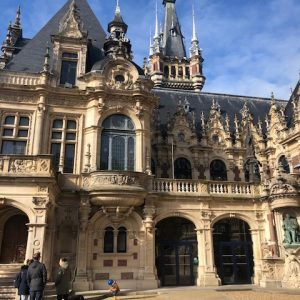Day in Fécamp
Fécamp is a lovely, though not spectacular, little town in Upper Normandy, on the British Channel, about 200 km west of Paris.
The prehistoric site, on the high ground inland from the port of Fécamp, reveals human occupation dating back to Neolithic times. The history of Fécamp has always revolved around the fishing industry and its harbour. And thanks to its beautiful beach and chalk cliffs, it is now a popular site for family tourism.
But Fécamp is most well-known for being the home of the famous Benedictine liqueur.
The story of the Benedictine liqueur starts in 1510 at Fécamp Abbey when legend has it that the Benedictine monk, Dom Bernardo Vincelli, created a secret elixir. It met with such resounding success that the Benedictine monks at Fécamp continued to produce it up until the French Revolution, a troubled era in the course of which the recipe for the famous elixir was lost.
The story goes that one fine day in 1863 Alexandre Le Grand, a wine trader from Fécamp, quite by chance discovered the composition of this elixir lost during the Revolution in his library. Intrigued, he decided to decipher the recipe and after a year’s effort succeeded in reconstituting it.
The elixir thus became a liqueur that he called Bénédictine in tribute to the Benedictine monk, Dom Bernardo Vincelli.
Thanks to my guide, Sarah, I enjoyed a nice visit of the sumptuous The Palais Bénédictine that Alexandre Le Grand built to provide a prestigious setting for the distillery of the liqueur (which is still in operation today) and for his collection of works of art and memorabilia on the Bénédictine story.
Today, Bénédictine is no longer a charming story of medieval inventiveness, but a big business, with a vast array of derived products. In the funky tea room, I tasted four Bénédictine drinks – Bénédictine D.O.M., Bénédictine & Brandy (created for the American market), Bénédictine Single Cask, and Bénédictine 1888.
The Shop also has a range of cocktail ingredients, chocolates, sweets, posters, postcards, glasses and other Bénédictine products. It is an interesting reminder of how France’s rich cultural heritage has become a key element of the nation’s economy, and keeps this country alive.





